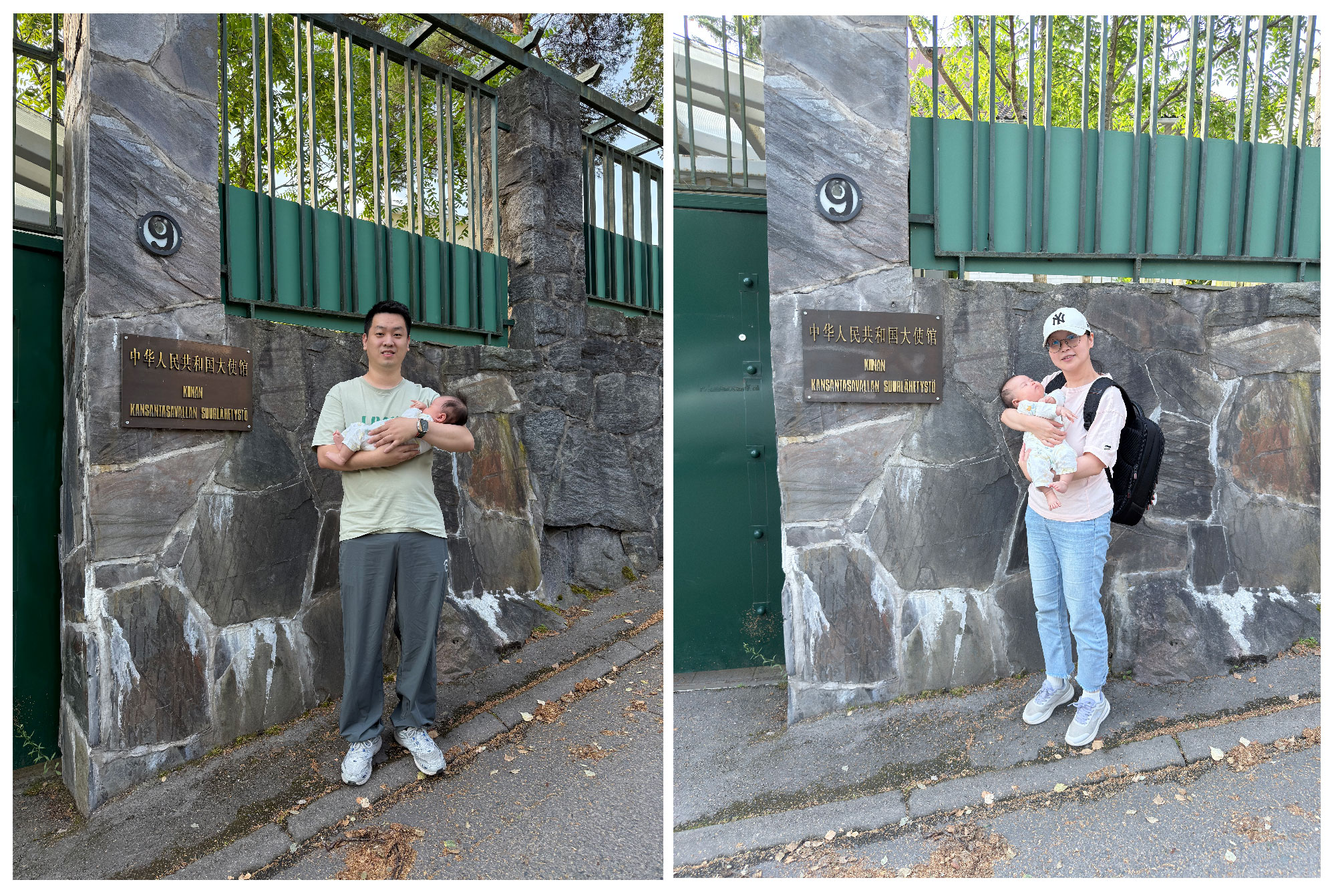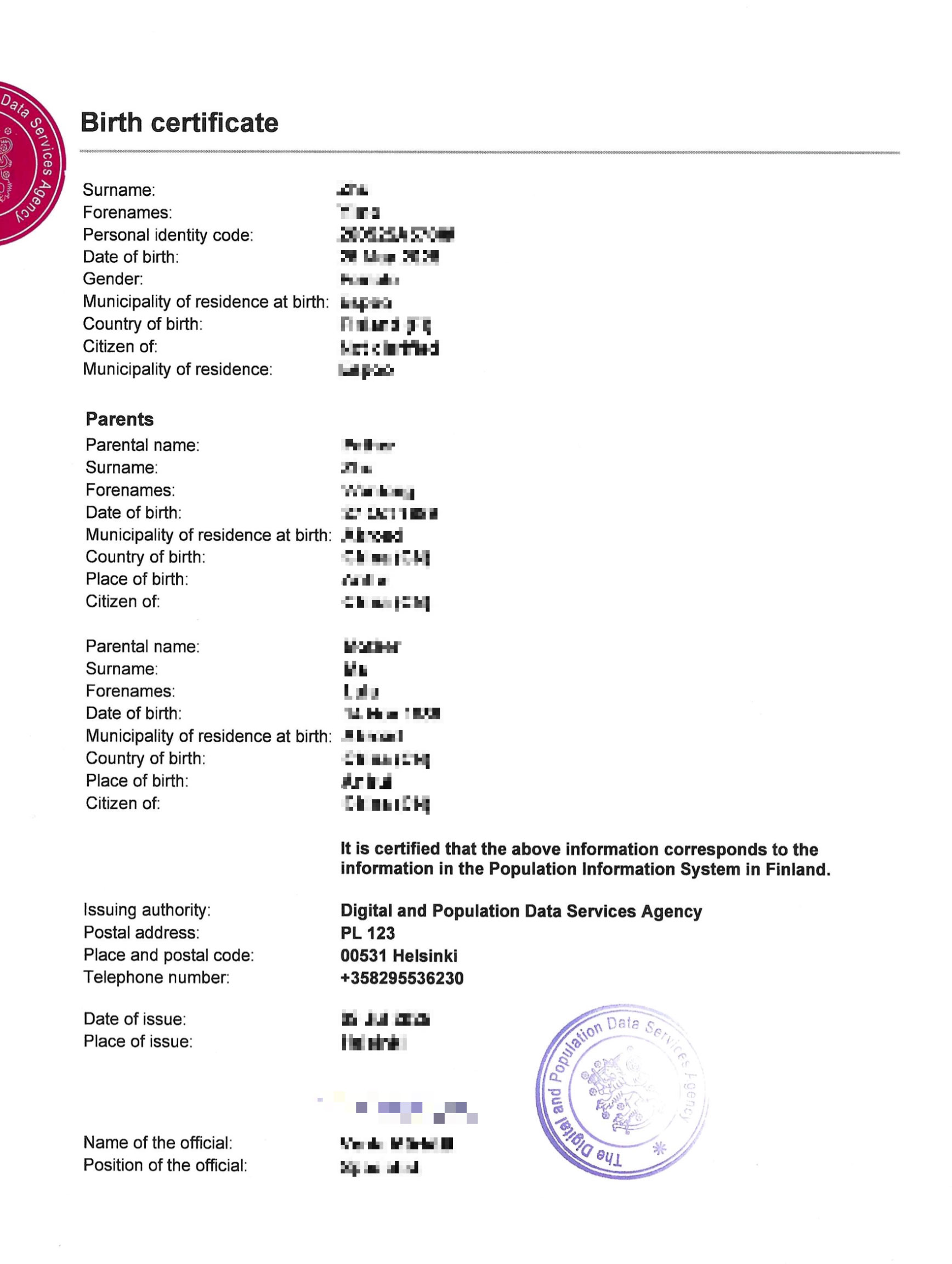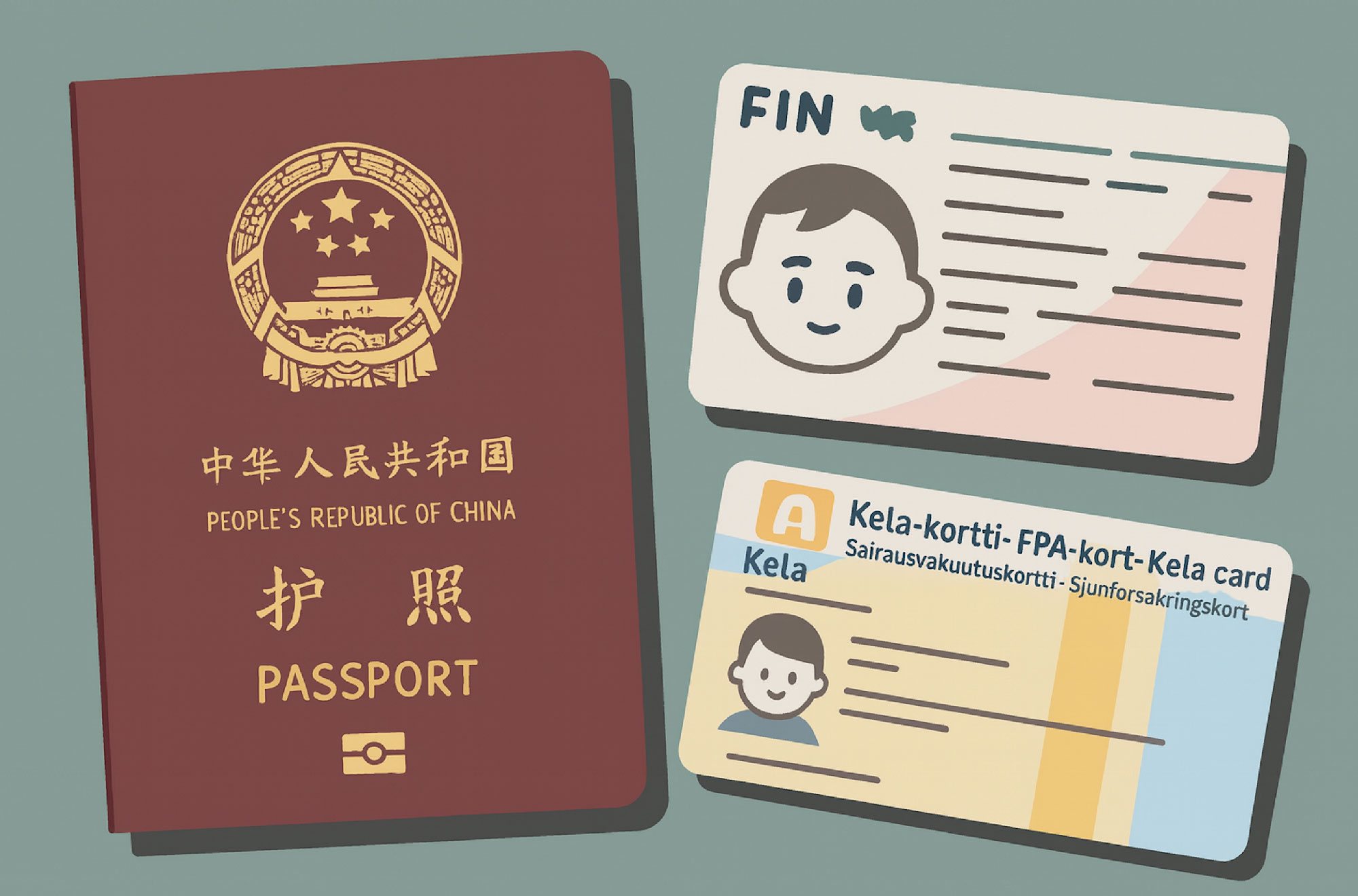This summer, we welcomed our second daughter in Finland, only to realize that her identity needed urgent attention. Each step in the paperwork felt like unlocking a new level in her life, filled with challenges and joy.

This is a photo we took at the embassy this summer when we were getting a passport for our daughter. M, who is thousands of kilometers away, saw it and said, "This photo will feel very historical when we look at it 20 years from now." I was taken aback for a moment and felt he was right. Thus, this little note was born.
This summer, we welcomed our second daughter, born in Finland. Not long after being discharged from the hospital, while our family of four was still adjusting to life, we had to start considering one thing: getting her official documents.
Children born in Finland inherit their nationality from their parents. This means that apart from the birth certificate handed to us by the doctor upon discharge, she actually has no formal documents for long-term residence in Finland, let alone a passport. Strictly speaking, she is a kind of "gray area" undocumented child.
Legally, there is no issue—since her parents have legal residency, a child born in Finland can naturally live there for a while (I checked, and surprisingly, there are no strict official regulations on the duration in this case, just a suggestion to complete it within three months—can we also choose not to follow their suggestion?). But without a passport, she cannot leave Finland; even if she gets a passport or leaves Finland, without a residence card, she may never be able to return.
After researching the process, we realized it was a tightly linked "task chain":
- First, go to the Finnish population office to register her name, which is a prerequisite for the next step.
- Still at the population office, obtain the official Finnish birth certificate and residence certificate.
- Take these documents to the Chinese embassy in Finland to apply for a passport.
- Once the passport is obtained, go to the Finnish immigration office to apply for a residence card for the child following her parents.
- When returning to China in the future, we also need to go to the local police station to register her household and apply for an ID card (and conveniently claim the new parental allowance).
Each step relies on the previous one, just like a dependency chain in programming. As a programmer, I couldn't help but think: if there were a bug in this process, would it get "stuck"? 😅
Our Journey Through the Documentation Process
On the day we were discharged, the doctor handed us a thin piece of paper with the baby's birth date and gender, and even thoughtfully generated a Finnish ID number.

The birth certificate issued by the hospital, a thin piece of paper, became her "first document" in life.
This is the hospital's birth certificate. At first glance, it looks quite official, but later we found it was almost useless. Because Finland's government is highly digitized, when we later applied for the official birth certificate on the population registration office's website, the staff directly retrieved the child's information from the system, and we didn't need this paper at all.
Holding her while she slept, with that little piece of paper in hand, we couldn't help but find it amusing—just a few days after her birth, she already had her "first document."
Another interesting detail is that children born in Finland do not need to be named immediately. Parents can take their time to think of a name, and a few days later, the DVV population office will send a letter about "naming," which you need to log into the system to submit within a specified time. Until then, her designation in the system was "daughter of someone."
After returning home, we quickly received this email and excitedly filled in the pinyin of the Chinese name we had in mind. Unexpectedly, because the name was "too Chinese" (only four letters), it triggered an additional process. I remember when I called to ask, the staff at the population office even asked me, "Is the name you chose a common name?" I said, "Yes." The other party seriously replied, "No. Common names should be like Mikko, Anna, Tiina, yours doesn't belong to that category." Well, those names... don't seem to fit us... So I explained that it was the pinyin of a Chinese name, and they finally understood. In the end, they asked us to submit an explanation detailing the name's origin and meaning. So we wrote it down meticulously like we were submitting homework.
This process dragged on for several weeks. Every day, opening the email felt like waiting for report cards. Fortunately, it was finally approved, and when we received the birth registration certificate, I felt a sense of relief.

The official certificate issued by the population registration office took several weeks to be approved. Seeing it at that moment brought a sense of relief.
With the documents in hand, we could finally move on to the next step—applying for a passport.
Once the materials were complete, we submitted the application on the website of the Chinese embassy in Finland. Filling out forms, uploading documents, and checking repeatedly, we only dared to click submit after confirming everything was correct. To our surprise, in Finland, there was no need to go in person; we just had to arrange a "remote interview." During the interview, we were also required to prepare a recent local newspaper or a box of milk with a clear date on it to verify the time and identity.
On the day of the video interview, the staff asked us to bring the baby in front of the camera, and she happened to yawn, looking completely dazed. Her first "interview" was passed in such a muddled way. We couldn't help but laugh; this was probably a unique experience.
A few days later, the embassy notified us that the passport was ready for pickup. Our daughter slept the whole way, completely unaware of what was happening. We took a few photos at the entrance—her in our arms with the embassy's plaque behind us. The photos were simple but felt particularly special: this was her first visit to the embassy and the first time she left a mark as a "citizen."
The first page of the opened passport features that little baby ID photo. Her tiny face looks serious, resembling a little adult. We couldn't help but laugh. But despite the laughter, the moment we held the passport in our hands, I truly felt at ease. No matter where she goes in the future, this passport is her proof.
After obtaining the passport, the next step was to apply for a residence card at the Finnish immigration office. Since her parents were already legally residing in Finland, the child's residence card was almost effortless and was quickly approved. Once everything was settled, we would also receive a Finnish social security card within a few months—though this card is somewhat meaningless because children born and residing legally in Finland can enjoy the same medical and welfare benefits as other children. Until she receives her own social security card, we have to use her parents' social security cards to prove her identity at the health clinic.

From a small piece of paper to a passport, residence card, and social security card, we finally pieced together her little identity puzzle.
From a small piece of paper to gathering all the documents, it felt like we accompanied her through the first "mini-adventure" of her life. When she grows up and sees these photos, she will probably laugh at how serious we were back then. — Have you ever done something similarly "serious" for your child?
If this post was helpful or sparked new ideas, feel free to leave a comment!